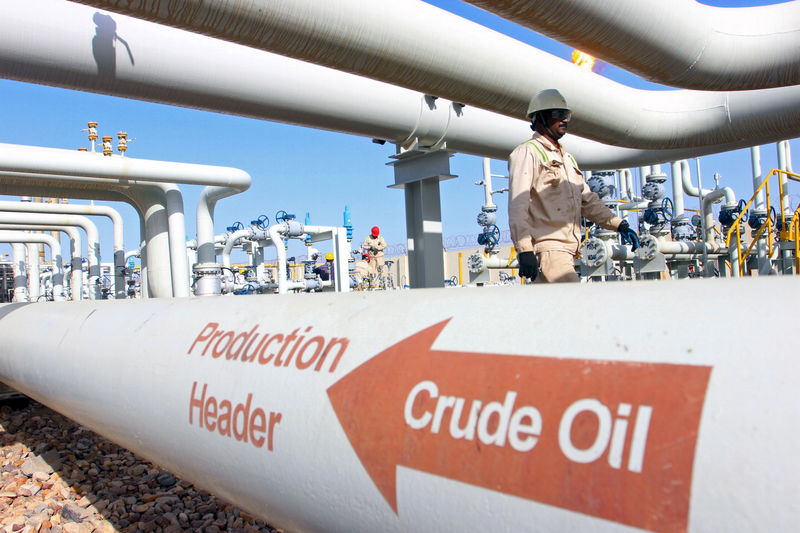Investing.com’s stocks of the week
By Liz Moyer
Investing.com -- U.S. oil stockpiles fell more than expected in the latest week, the Energy Information Administration said on Wednesday.
Crude inventories fell 994,000 barrels last week, compared with analysts' expectations for a build of 446,000 barrels.
Distillate stockpiles, which include diesel and heating oil, declined by 9,000 barrels in the week against expectations for a draw of 429,000 barrels, the EIA data showed.
“The push-and-pull between imports and exports led to a drawdown that missed the wider consensus of market analysts, yet fell short of the high bar of market bulls, set by the API data, which called for a deficit of some 4.3 million barrels," said Investing.com analyst Barani Krishnan. "Crude imports actually rose 1.4 million barrels per day, and if you do the math, that would mean a higher inflow of 9.8 million barrels . That was offset by a 720,000 bpd rise in exports that itself takes 5.04 million barrels off that earlier 9.8 million-barrel build. U.S. crude exports have been truly remarkable for a while, with China stocking up on all they can buy in anticipation of their rebound this year, regardless what happens in the broader world."
Refinery crude runs fell 80,000 barrels. The weekly refinery utilization rate was 0.6%, according to the EIA report.
Gasoline inventories rose 4.466 million barrels last week the EIA said, compared with expectations for a 1.134 million-barrel build.
Krishnan added: "Adding to the U.S. crude exports, you have a further outflow of 2.5 million barrels from Cushing and some more downward adjustments in the West Coast, East Coast and Midwest. Refinery runs also rose by 0.6% percent and that strengthens the narrative we’ve been seeing for weeks now. Due to the price gains in crude, it’s just become more cost-advantageous to turn oil into products now than store it as crude. That explains the gasoline build in the past four out of five weeks. You now have a net build of 15.6 million barrels of gasoline over the past five weeks and all these, ultimately, will have to find consumers. The Biden administration’s economic recovery programs, along with Covid-19 vaccination progress will determine how gasoline consumption shapes in the coming days, weeks and months.”
